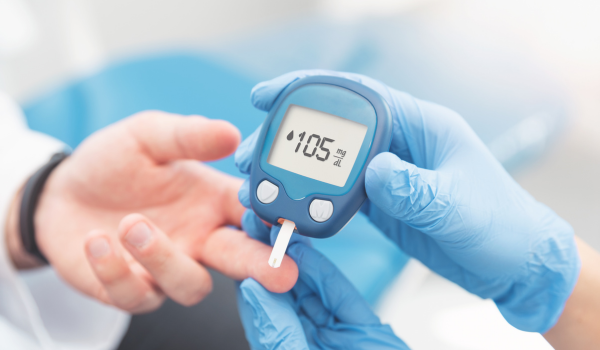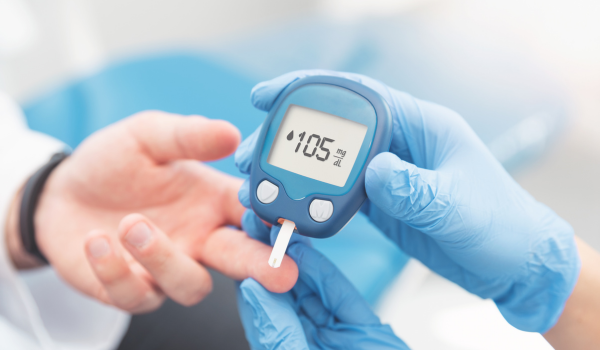
Understanding Diabetes
Diabetes mellitus is one of the most common chronic diseases worldwide, affecting hundreds of millions of people. It develops when the body cannot properly regulate blood glucose, leading to persistently high blood sugar levels. Over time, uncontrolled diabetes damages the heart, kidneys, eyes, nerves, and blood vessels.
The root cause of diabetes varies depending on the type, but the disorder always involves a problem with insulin—the hormone that helps move glucose from the blood into cells for energy. Understanding what triggers diabetes is key to prevention, early detection, and effective management.
Type 1 Diabetes
Type 1 diabetes is an autoimmune condition in which the body’s own immune system mistakenly attacks and destroys the insulin-producing beta cells in the pancreas. Without insulin, glucose builds up in the bloodstream instead of being used for energy.
Key causes include:
-
Genetic predisposition: Certain genes increase vulnerability to autoimmune attacks.
-
Immune dysfunction: The body fails to distinguish between self and foreign tissue, targeting pancreatic cells.
-
Environmental triggers: Viral infections such as enteroviruses may initiate the autoimmune reaction in genetically susceptible people.
Type 1 diabetes usually develops in childhood or adolescence, though it can occur at any age. Unlike other forms, it is not linked to lifestyle factors such as diet or obesity.
Type 2 Diabetes
Type 2 diabetes is the most common form, accounting for more than 90% of cases worldwide. It develops when the body becomes resistant to insulin or when the pancreas cannot produce enough insulin to maintain normal blood sugar levels.
Main causes include:
-
Obesity and excess body fat: Particularly fat stored around the abdomen, which interferes with insulin sensitivity.
-
Sedentary lifestyle: Lack of physical activity reduces the body’s ability to process glucose efficiently.
-
Genetics and family history: Having a close relative with type 2 diabetes significantly increases risk.
-
Age: Risk rises after age 45, though younger people are increasingly affected due to lifestyle factors.
Unlike type 1, type 2 diabetes develops gradually, often going undiagnosed for years until complications appear.
Gestational Diabetes
Gestational diabetes develops during pregnancy when hormonal changes impair insulin function. The placenta produces hormones that help the baby grow but also make the mother’s cells more resistant to insulin.
Causes include:
-
Pregnancy hormones interfering with glucose metabolism.
-
Preexisting risk factors such as obesity or a family history of diabetes.
-
Multiple pregnancies or older maternal age, which increase the likelihood of insulin resistance.
Though it often resolves after delivery, gestational diabetes raises the risk of type 2 diabetes later in life for both mother and child.
Genetic Influence
Genes play a powerful role in determining who develops diabetes. Studies show:
-
Type 1 diabetes is strongly associated with specific human leukocyte antigen (HLA) genes that regulate immune function.
-
Type 2 diabetes tends to run in families, with multiple genes contributing to insulin resistance and pancreatic beta-cell failure.
-
Rare forms of diabetes, such as MODY (Maturity Onset Diabetes of the Young), are caused by single gene mutations that directly impair insulin production.
Genetics alone does not guarantee diabetes, but combined with environmental and lifestyle triggers, risk rises significantly.
Obesity and Weight Gain
One of the strongest and most preventable causes of type 2 diabetes is obesity. Excess fat, especially visceral fat around the abdomen, releases inflammatory chemicals that disrupt how cells respond to insulin.
-
Overweight individuals are up to 80 times more likely to develop type 2 diabetes than those with a healthy weight.
-
Even modest weight gain can reduce insulin sensitivity.
-
On the other hand, losing just 5–10% of body weight can dramatically lower the risk.
This makes weight management a cornerstone of diabetes prevention.
Sedentary Lifestyle
Physical activity helps muscles absorb glucose without relying as heavily on insulin. Lack of regular movement contributes to insulin resistance.
Causes include:
-
Spending most of the day sitting at work or home.
-
Low levels of structured exercise such as walking, jogging, or strength training.
-
Excess screen time, which is linked to higher obesity rates and diabetes risk.
Even small increases in activity—like walking 30 minutes a day—can cut diabetes risk significantly.
Unhealthy Diet
Diet plays a direct role in diabetes development. High consumption of:
-
Sugary drinks
-
Refined carbohydrates (white bread, pastries, processed snacks)
-
High-fat fast foods
… all increase insulin resistance and weight gain.
By contrast, diets rich in whole grains, fruits, vegetables, lean proteins, and healthy fats support better glucose control and reduce diabetes risk.
Hormonal Disorders
Certain medical conditions can cause secondary diabetes by interfering with insulin production or action. Examples include:
-
Cushing’s syndrome: Excess cortisol raises blood sugar.
-
Acromegaly: Too much growth hormone reduces insulin sensitivity.
-
Hyperthyroidism or hypothyroidism: Thyroid hormone imbalance disrupts glucose metabolism.
These forms are less common but highlight how hormonal balance plays a key role in preventing diabetes.
Medications
Some medications can raise blood sugar or impair insulin sensitivity, including:
-
Glucocorticoids (steroids): Commonly prescribed for inflammation and autoimmune diseases.
-
Antipsychotic drugs: Certain atypical antipsychotics increase diabetes risk.
-
Blood pressure medications such as thiazide diuretics and beta-blockers.
Patients requiring these drugs long-term may need regular monitoring to detect early signs of diabetes.
Stress and Cortisol
Chronic stress causes prolonged elevation of cortisol, the stress hormone. Cortisol raises blood sugar to prepare the body for “fight or flight.” When stress is constant:
-
Blood glucose remains high.
-
Insulin sensitivity decreases.
-
Appetite and weight gain increase, especially around the abdomen.
This indirect pathway makes stress management another important part of diabetes prevention.
Sleep Problems
Poor sleep or sleep disorders such as sleep apnea raise the risk of diabetes by disrupting insulin function. Studies show that:
-
Getting fewer than 6 hours of sleep per night increases insulin resistance.
-
Interrupted sleep alters hormones that control hunger and blood sugar.
-
Sleep apnea is strongly linked to obesity and type 2 diabetes.
Good sleep hygiene is therefore a protective factor.
Alcohol and Smoking
Both alcohol and tobacco increase the likelihood of developing diabetes:
-
Excessive alcohol damages the pancreas and liver, affecting glucose control.
-
Smoking raises inflammation and insulin resistance, while also increasing cardiovascular risks.
People who smoke heavily are up to 40% more likely to develop type 2 diabetes compared to non-smokers.
Age and Ethnicity
Certain demographic groups face higher risks:
-
Age: Risk increases after 45, though cases are rising in younger populations.
-
Ethnicity: African Americans, Hispanics, Native Americans, and Asians are disproportionately affected.
Genetics, environment, and lifestyle factors all combine to explain these disparities.
Childhood Risk Factors
The rise of childhood obesity has fueled a surge in early-onset type 2 diabetes. Contributing causes include:
-
Unhealthy diets high in sugar and processed foods.
-
Sedentary lifestyles with limited outdoor activity.
-
Family history of diabetes.
Children with obesity are not only at risk for diabetes during youth but also face greater lifetime risks of cardiovascular disease.
Environmental and Social Factors
Access to healthy food, safe places to exercise, and quality healthcare all influence diabetes risk. Communities with limited access to fresh produce or safe walking paths often experience higher rates of type 2 diabetes.
Socioeconomic status also affects:
-
Education about healthy lifestyle choices.
-
Ability to afford medications and preventive care.
-
Stress levels tied to financial insecurity.
This makes diabetes not only a medical issue but also a public health challenge.
Why It Develops
Diabetes mellitus develops when multiple factors interact: genetics, environment, lifestyle, and other health conditions. It is rarely caused by one factor alone.
-
Type 1 is primarily autoimmune and genetic.
-
Type 2 develops from lifestyle triggers layered on genetic susceptibility.
-
Gestational diabetes arises from pregnancy hormones combined with risk factors like obesity.
Ultimately, diabetes develops when the body can no longer maintain normal blood sugar balance, whether due to insufficient insulin, resistance to insulin, or both.









